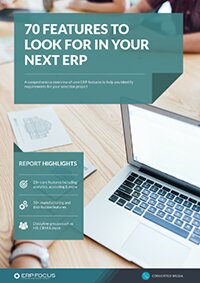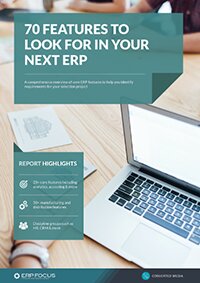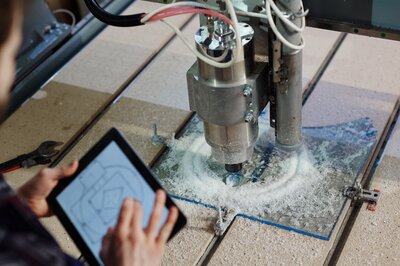Five features your legacy manufacturing ERP may be missing
Your legacy manufacturing ERP has served you well for a couple of decades so far. It handles all your transaction and gives you good suggestions for purchase orders and production jobs. “If it ain’t broke, don’t fix it!” you cry. But there have been a lot of new possibilities opened up since you began using that ERP, and your competitors could be using them to gain an edge on you
1. Business Intelligence
Gone for almost everyone else are the days when you printed a report to a text file and parsed it with your spreadsheet to even begin an analysis. Nowadays, any data can be easily exported directly to that spreadsheet. Better still, ERP has the tools to re-plan your production schedule using a possibly revised set of rules and compare the likely results using business intelligence tools available in ERP.
2. Quality Management Systems
TQM began as a manufacturing thought process in the 1950s and evolved to QMS where processes, procedures, and responsibilities are documented and continuously improved to yield better customer satisfaction. A modern ERP can identify whether a person completing any operation has the training required to qualify that person for that operation.
3. A good user interface
If your legacy manufacturing ERP shows inventory on a green screen with a fixed-size font, it might be out of date. Users are comfortable with Facebook and similar software that shows a simple, colorful screen with important data easily distinguishable from less critical data. You are checking what inventory needs to be replenished. Identifying the problems when they are highlighted in a bright red font is a lot more likely to succeed rather than finding the critical few amid the green text column of a legacy ERP.
4. The cloud and real-time data availability
Once upon a time all manufacturing ERP systems ran on a server located at your site. A business paid millions of dollars to achieve that capability. Today’s ERP can run over the internet with data stored off premises and can be had for a few thousand dollars a month. Your sales staff at an office building can use the same system as your production people at the manufacturing plant with real-time availability. Better still, your executives in their downtown suite can use it too.
5. IoT integration
Your legacy ERP runs on a mainframe and data can be seen on fixed terminals. The old system works. But a newer system allows a user to see manufacturing information on their smartphone anywhere they are. The device can also be production equipment connected to ERP through the internet. Your extruder is working at its best speed based on many variables. Live data from the extruder can be used to reschedule downstream work and customer deliveries based on facts instead of estimates or hopes.
Manufacturing ERP has come a long way. See what it can do to help your business.
Free white paper

70 features to look for in your next ERP
A comprehensive guide to help you identify requirements for your ERP selection

Featured white papers
-

Manufacturing ERP: 10 steps to success
Complete step-by-step guide to manufacturing ERP software
Download -

Manufacturing ERP Implementation Checklist
Over 70 actionable steps to rolling out new manufacturing ERP software
Download -

70 features to look for in your next ERP
A comprehensive guide to help you identify requirements for your ERP selection
Download
Related articles
-

ERP for make-to-order manufacturing
How can ERP help your make-to-order manufacturing business thrive?
-

Secret KPI: Why Your ERP Implementation Team Matters More Than Software
Learn how Godlan ensures successful ERP implementation for manufacturers with proven strategies &...
-

Shop floor management: 4 ways ERP can improve efficiency
Learn about the shop floor efficiencies that can be realized through the implementation of manufa...

